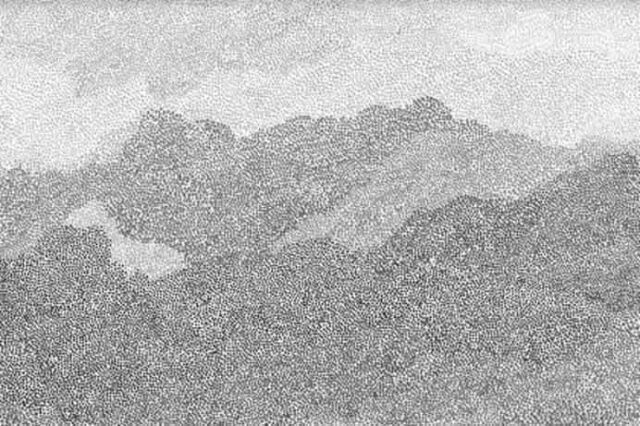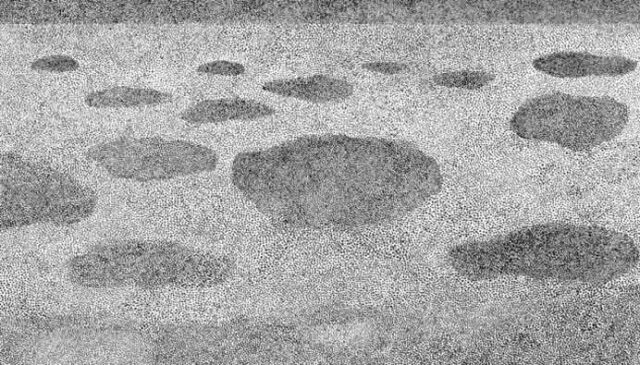From The Paris Review:
In April 2012, while with his family on a beach in Hong Kong, Bei Dao suffered a stroke that severely affected his language abilities. After a month of trying to learn how to read all over again, he was assessed by a speech-language pathologist to be at only 30 percent equivalency. Daily conversation was difficult; the words he depended on for his life and art would possibly never return. It was an unprecedented crisis that he later compared in an essay to being “like an animal trapped in a cage.” (I’m reminded of these lines Bei Dao’s friend Tomas Tranströmer wrote after a paralyzing stroke, translated from the Swedish by Robin Fulton: “I am carried in my shadow / like a violin / in its black case.”) While recovering in the hospital, Bei Dao started to doodle and brush calligraphy, and when he returned home, he started to paint, channeling the lyric impulse from the void of words into physical images. Thirty years had passed since he’d last painted a picture.
Bei Dao’s first paintings in this period were composed of repeating lines that formed an abstract landscape resembling surging hills or waves. Feeling he lacked the necessary skill and technique to manipulate the plastic line, he abandoned it and turned to one of the most fundamental elements of Chinese painting: the ink dot. A longtime photographer, he compares the ink dot to the pixel of a photograph. In his book-length poem Sidetracks, which will be published in English by New Directions in 2024, he describes the creative process of ink-dot painting like this:
nebular ink dots on rice paper—in accord with the cosmos painting pictures makes me euphoric ink dots cluster disperse depending on the flow of random scattering forest beyond the borders of language good fortune depends on disaster / disaster conceals good fortune I am aimless freedom listening closely to the whispers of snowflakes guarding the vortex of day and night at the center of the mysterious river
Four years after his stroke, Bei Dao’s Chinese language abilities had improved dramatically, and a new medical assessment showed a recovery of over 80 percent. He continued his painting practice, though, and started to write poetry again. In 2018, a year before he turned seventy, Bei Dao had his first-ever painting exhibition at the Galerie Paris Horizon, located just north of the Centre Pompidou. In the essay he wrote for the exhibition, he contrasts the oil-based pointillism of an artist like Seurat with the watery ink dots of the East, where the tones and textures of the so-called five shades of ink in traditional Chinese painting must be naturally integrated with the brush and the rice paper to form a single whole. And as the water evaporates, the ink colors change, creating unexpected effects.
Link to the rest at The Paris Review

